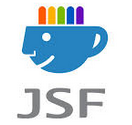What is Enterprise Push Server? In ICEfaces EE 2, the Enterprise Push Server (EPS) is built to manage singleAjax Push blocking connection(s) with the client browser and share it with any number of deployed ICEfaces applications and portlets, in both stand-alone and clustered deployments. The Enterprise Push Server delivers key additional features targeted at large-scale …
Icefaces
ICEfaces EE 2.0 is Now Available!
ICEfaces EE 2.0 is Now Available! ICEfaces Enterprise Edition (EE) 2.0 is a JSF 2 ready, enterprise-grade development framework, designed to allow enterprise application developers to quickly design, test and deploy rich collaborative web applications. also read: Introduction to JSF JSF Interview Questions Request Processing Lifecycle phases in JSF ICEfaces EE 2.0 provides enterprise-grade features …
ICEfaces in Portals with PortletFaces Bridge
ICEfaces in Portals with PortletFaces Bridge ICEfaces 2 uses the open source PortletFaces Bridge project to provide a much improved portal development experience. The PortletFaces Bridge is based in part on the JSR 329 standard, and provides advanced support for JSF 2.0 Portal applications. Using the improvements in both JSF 2 and Portlet 2, the …
ICEfaces 1.8
What is ICEFaces? ICEfaces is an integrated AJAX Java application framework that enables Java EE AJAX application developers to easily create and deploy thin-client Rich Internet applications (RIA) in pure Java. ICEfaces is a fully featured product that enterprise developers can use to develop new or existing Java EE AJAX applications at no cost. ICEfaces …

